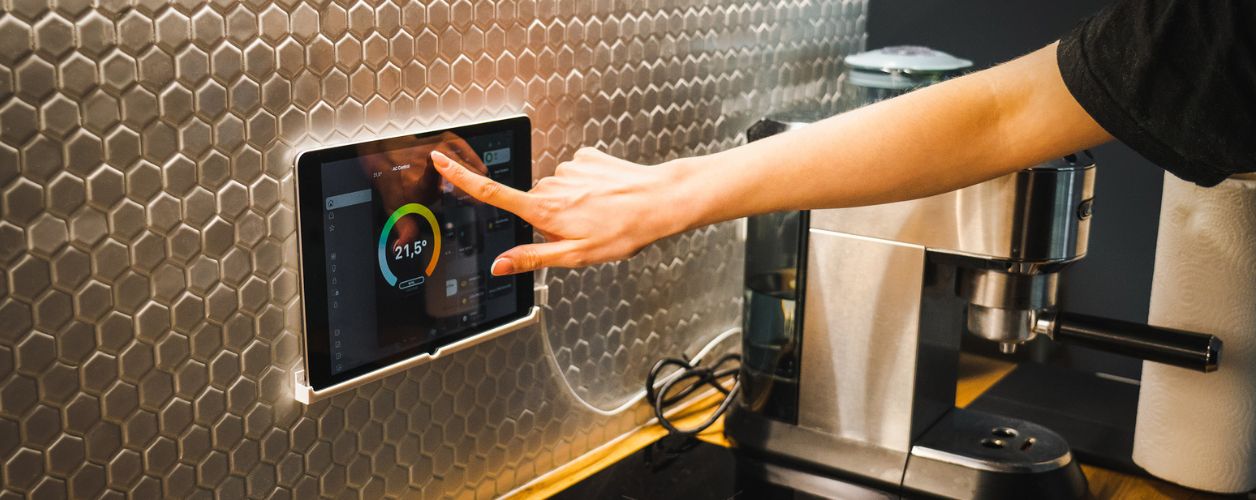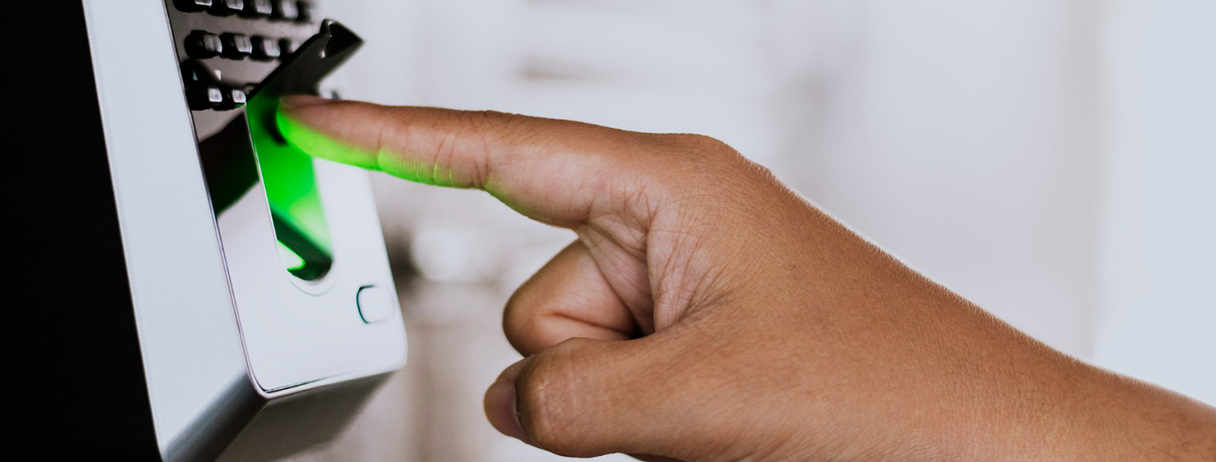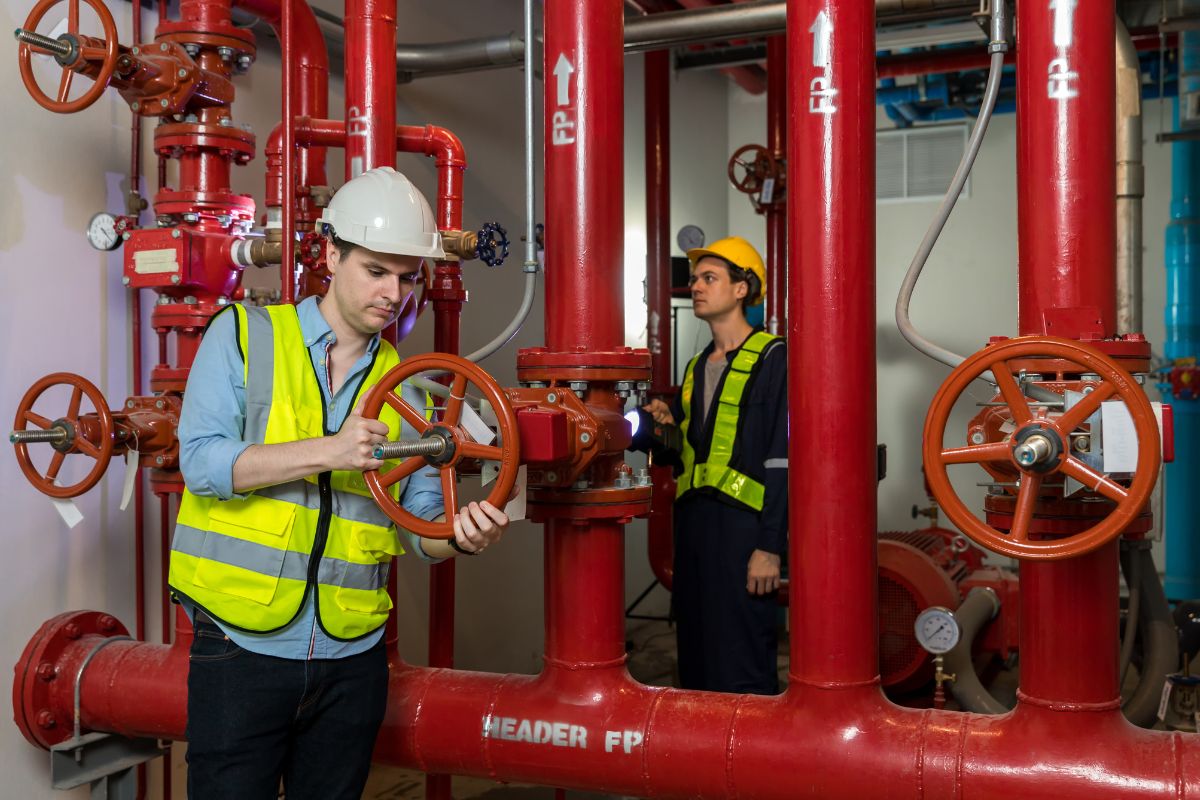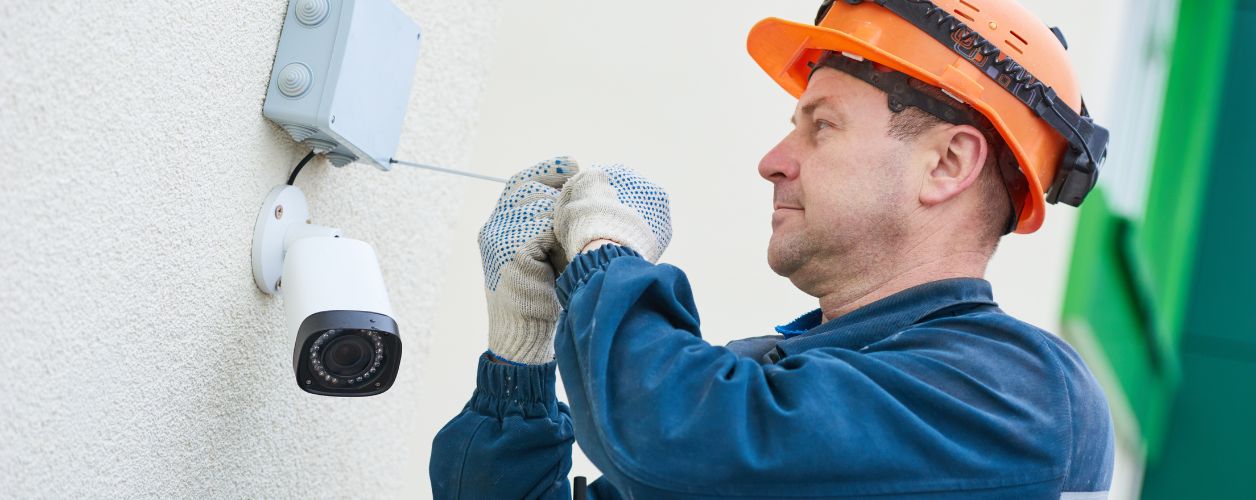How Much Does Home Automation Cost? A Smart Home Detailed Pricing Guide
Australians are wholeheartedly adopting home automation technology. By 2025, smart home technology is expected to become a mainstream part of Australian households, driven by improved accessibility, affordability, and growing demand for convenience and energy efficiency.
Changes in household technology include voice-activated lighting and smart security solutions, which allow homeowners to watch their properties remotely anywhere in the world. The modern smart home dream has moved from theoretical discussions into reality. The abundance of options often causes homeowners to stand still because they want to know the price of home automation.
You will find the entire price range described in this complete cost assessment. This can guide you whether you want to install home automation yourself or implement professional smart home systems because it helps you establish strategic planning and smart budgeting.
What Is Home Automation?
Using technology enables household owners to manage daily household activities through home automation systems. Home automation lets you handle thermostat modes along with light automation by using either smartphones or voice assistance, or centralized control panels.
Common Smart Home Features
- Smart lighting and power points
- The system contains functions for climate control, consisting of heating systems and cooling devices, and ceiling fan automation.
- The combination of security and access functions consists of alarm systems and cameras, together with smart locks.
- Audio/visual entertainment systems
- Smart blinds and curtains
- Garden irrigation
- Appliance automation
- Voice control and central hubs
Your option stands between a single automated aspect or linking entirely home automation systems into a synchronized platform.
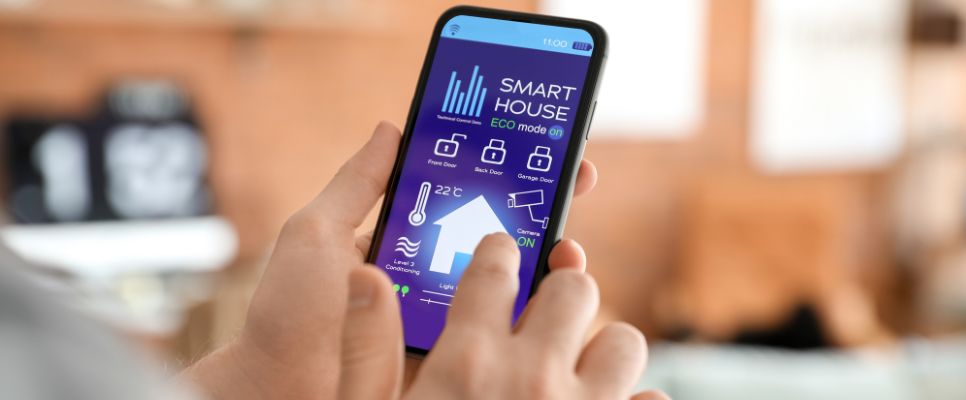
DIY vs Professional Home Automation Installation
Two main smart home installation types need understanding before learning about costs.
DIY Home Automation Systems
DIY smart home solutions provide affordable modular installation that does not require expert knowledge to put together. These setups offer excellent flexibility since they work for users who both rent and own their homes.
Customers may choose products from brands that include Philips Hue alongside Arlo, as well as Ring, followed by Google Nest and Amazon Alexa and TP-Link, and Eufy.
Pros:
- Lower upfront costs
- Can be installed gradually
- Easily movable (great for renters)
Cons:
- Less seamless
- Can lead to app overload
- These systems have boundaries regarding their expandability capabilities and their maximum automation intelligence level
Professional Home Automation Systems
When builders or renovators integrate systems during construction projects, these setups become either hardwired or hide their connections. The setup delivers powerful results, which enable users to control their entire residence through a central interface.
Popular Brands: Control4, Savant, Crestron, KNX, Fibaro
Pros:
- High-end, polished user experience
- Seamless integration across all devices
- Greater long-term value for the home
Cons:
- High installation and equipment costs
- Needs expert configuration
- These systems are designed especially for property owners instead of those who rent homes.
How Much Does Home Automation Cost in Australia?
The total cost of home automation depends heavily on the system kind and brand, and the level of its automation features, as well as the choice between retrofitting an existing home or building a new automated residence. A price overview follows below according to various system elements.
Smart Lighting – The Gateway to Automation
Homeowners commonly start their smart home adventure with lighting because this component makes the most sense for a variety of reasons. A home automation system offers affordability together with usability, so homeowners get an effective atmosphere and energy-saving benefits.
DIY Smart Lighting
- Smart bulbs (individual): $25 – $80 each
- Smart light switches or dimmers: $60 – $200 each
- The price range for lighting starter kits falls between $180 and $400.
Example Budget for a 3-bedroom home:
- 10 smart bulbs + 3 switches = ~$700
Professional Smart Lighting
- A whole-home lighting system implemented by Control4, KNX, or Lutron brands carries a price range from $3,000 to $15,000.
- Professional integration between motion sensors and schedules, scenes, along with voice control functionality, requires an additional cost range from
$2,000 to $5,000.
- Electrical installation: $80 – $120 per hour
Key Cost Factors:
- Wired vs wireless systems
- Custom scene programming
- The installation takes place at either the building stage or when retrofitting occurs.
Smart Climate Control – Comfort Meets Efficiency
Australian extreme weather requires smart climate control technology to provide both comfort and energy bill savings to homeowners.
DIY Options
- Smart thermostats: $250 – $500
- Smart AC controllers (for split systems): $200 – $400
- Portable Wi-Fi heaters/fans with smart control: $150 – $500
Professionally Integrated HVAC Systems
- Smart zoning systems (ducted): $5,000 – $15,000+
- Central climate integration with sensors per room: $1,500 – $6,000
- Compatible with Daikin, Mitsubishi Electric, ActronAir, and others
The system provides a bonus benefit, which brings about energy cost reductions of up to 30% upon proper optimization.
Smart Security Systems – Peace of Mind, Anywhere
A strong, smart security network serves two vital functions by warning users in real-time, along with triggering emergency services responses during security threats.
DIY Security Costs
- Smart doorbells: $200 – $400
- Wireless indoor/outdoor cameras: $150 – $350 each
- A complete alarm system made of motion sensors and hub equipment ranges in price between $300 and $700.
- Video storage subscription: $5 – $20/month
- DIY full kit for small home: $800 – $1,200
Professionally Installed Systems
- Full CCTV system (wired): $5,000 – $10,000+
- Smart locks + intercoms: $1,000 – $3,000
- The combination of remote alarm systems and monitoring services costs between $2,000 and $6,000.
- Annual monitoring: $200 – $1,200
- Companies that monitor systems provide premium discounts to customers.
Smart Blinds and Curtains – Automated Ambience
Automated blinds and curtains have become more and more popular since they benefit both energy-performing properties and accessible living spaces.
DIY Kits
- The cost for retrofitting blind motors ranges from $250 to $500 for each window installation.
- Smart curtain tracks (Wi-Fi-enabled): $400 – $800
- The system comes with built-in App and voice command functionality through integration features.
Custom Install
- The cost of professional motorised blind installation for home windows ranges from $800 to $1,500.
- Full-home setup: $6,000 – $20,000+
- Remote control or sunlight sensors are extra
Smart Entertainment Systems – Total Control
You no longer need to consider voice-controlled and smartphone-operable music and TV management as high-end features because this technology has reached widespread adoption status.
DIY Options
- People can get smart speaker devices, including Google Nest, Sonos, and Echo, which cost between $150 and $500 each.
- Smart TVs and streaming devices fall within the price range of $500 and extend up to $2000.
- Basic multi-room audio setup: $1,000 – $3,000
Professional Installation
- Whole-home audio (in-wall speakers + zones): $5,000 – $25,000
- The combination of a media room, which includes a projector and a surround sound system, ranges in price from $10,000 to $50,000.
- Universal remotes or central touchscreen: $2,000 – $5,000
Home Automation Hubs – The Brain Behind It All
Through automation hubs, you can merge all devices under a unified system. Such hubs provide the synchronization needed to merge both smart device routines and management systems within a single centralized interface.
DIY Hubs
- Google Nest Hub, Amazon Echo Show: $150 – $300
- Apple HomePod Mini (for HomeKit users): $150
- SmartThings or Home Assistant setups: $200 – $500
Professional Hubs
- Control4 central unit: $1,000 – $5,000
- Installation and customisation: $1,000 – $3,000+
- The annual fees for long-term support plans, as well as updates, may cost between $300 and $600.
Smart Irrigation and Outdoor Automation
Automation is transforming how homeowners manage their gardens and outdoor spaces. With intelligent systems that adjust watering based on weather and soil conditions, you can save water and maintain a lush landscape. Integrated with home automation, these outdoor solutions offer convenience, efficiency, and sustainability at your fingertips.
DIY Smart Garden Tech
- Wi-Fi sprinkler timers: $150 – $300
- Soil moisture sensors: $50 – $150
- Each solar-powered garden light with a sensor requires a price range between $20 and $100.
Professional Landscape Automation
- Implementing zoned smart irrigation systems through sensor installation requires a cost range from $3,000 to $8,000.
- The combination of outdoor lighting and gate control, and smart garage installation will cost between $5,000 to $15,000.
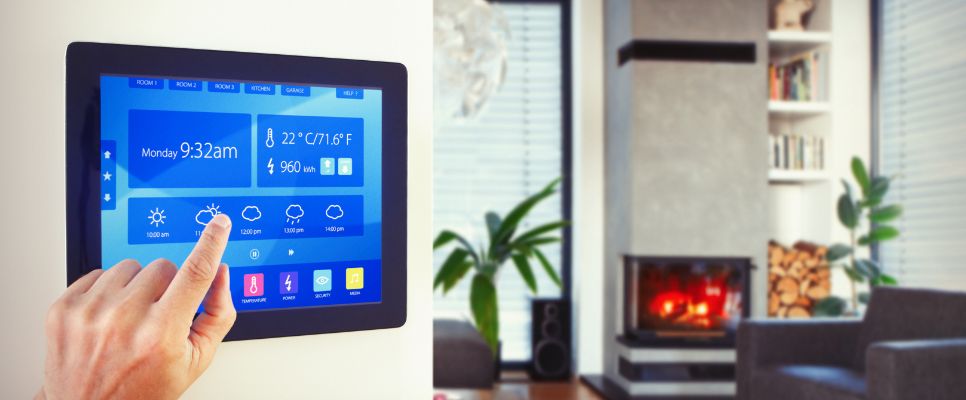
Internet and Power Setup – The Invisible Costs
A home system depends completely on the reliability of its network connection. The system requires powerful internet systems along with dependable power networks.
Infrastructure Costs
- Mesh Wi-Fi systems: $300 – $1,200
- Hardwiring Ethernet during build: $1,500 – $4,000+
- The implementation of surge protection together with backup batteries requires an investment ranging from $500 to $2,000.
Whole-Home Automation – What a Fully Integrated System Costs
Research estimates that residential smart home system costs follow a wide range of prices. The cost to build your smart home hinges on house dimensions, together with the system intricacy. Implementing this setup requires your labor expertise or payment to professionals.
One-Bedroom Apartment
Keeping things simple will be possible as a one-bedroom resident. A basic installation built by the homeowner will cost between $1000 and $3000. Users can expect this system to include smart lights and a voice assistant as well as application-controlled switches.
A professional installation of a complete smart system will require higher expenses between $5,000 and $10,000. Expect to pay between $5,000 and $10,000. Several smart devices comprising lighting control systems with smart climate management and automatic security locking features could be integrated through one central system.
Two to Three-Bedroom Home
The requirements for a small family house will need additional accessories. The cost of a DIY installation ranges from $3,000 to $6,000. You should begin your smart lighting and camera, and thermostat system installation with a few pieces before building up. Then build up over time.
Professional installation of a smart system results in a greater cost than its standard installation. The installation of a complete connected system will cost between $15,000 and $35,000. Professional services, along with layout setup and wiring installation, and ongoing assistance, are included in this price.
Four to Five-Bedroom Home
The more extensive a home becomes, the more devices it requires. The DIY installation process requires $5000 to $10000 in expenses. The standard system includes smart lighting together with security equipment and heating systems, and audio speaker amenities spread across various rooms.
The complete implementation of professional system connectivity comes with substantial expenses. Expect costs between $30,000 and $60,000. Specialized programs coupled with in-wall command interfaces and complete network administration make up these systems.
Large Custom or Luxury Homes
The higher the size or luxury factor of your house, the greater your installation costs will be. Costs initiate at $10,000 when building systems yourself. The majority of individuals within this category opt for professional installation services.
A state-of-the-art smart home built with complete connectivity costs at least $75,000. The expenses for such systems extend from $200,000 to an amount exceeding that figure. Always control various system components, including lighting, audio, home cinema, security, as well as pool or spa functions through a single application.
Factors That Affect Home Automation Costs
The expenses involved in building a smart home depend heavily on several different factors. You should consider these main factors for cost estimation.
- Type of System
Different systems require different price amounts for installation. Control4 and Crestron are top-tier. These controller solutions offer multiple features, but customers must pay expensive prices.
- Retrofit vs New Build
Quick installation of smart systems occurs more easily when you construct a new building. The installation of wires works best during wall construction. This saves time and money.
- Local Labour Rates
You will need to pay extra expenses when you hire a professional service. Local smart home professionals in Australia charge clients between $80 to $150 for every hour of installation work.
- Level of Integration
A few smart lights are cheap. A complete smart system combining lights and security features and blinds, and heating components will increase the total installation expenses.
- Aesthetic Requirements
Aesthetically clean and sleek designs require additional costs. That costs extra. Installation of hidden wiring along with in-wall panels demands additional work time. Installation expenses for concealing the equipment might come at a higher cost.
Conclusion
Basic DIY homeowners can start automating their residence for $1,000, whereas professional integration of top-end smart systems reaches above $100,000 in Australia. The appropriate system selection hinges on your life routines combined with your house design and your future objectives.
Home automation has evolved beyond being a fad since it now enables users to bring automation to their entire living space or individual spaces.

